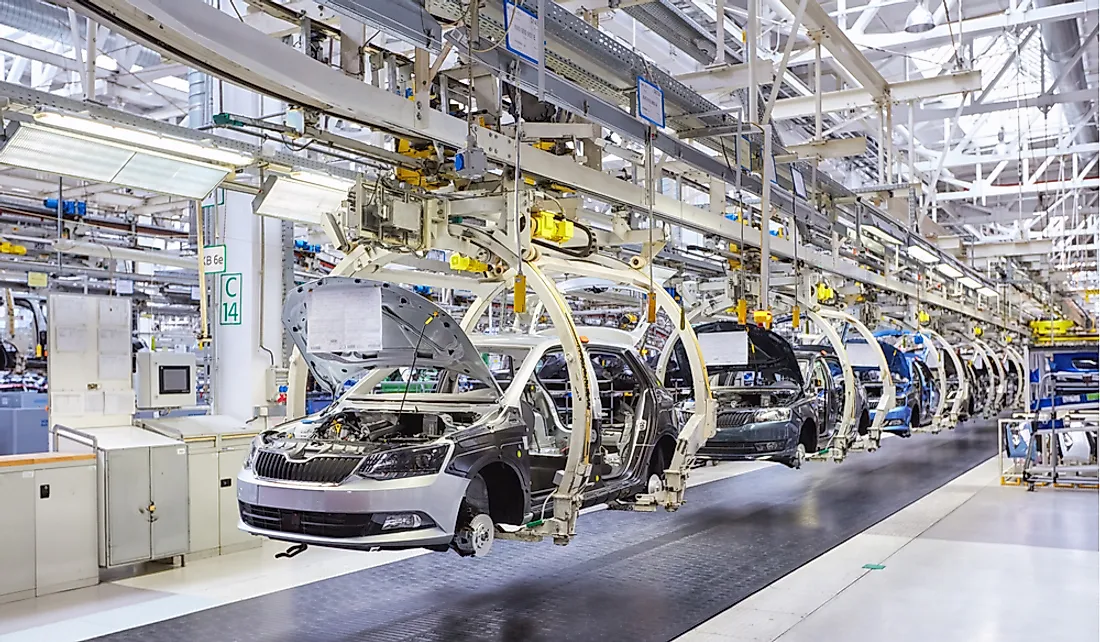What Are The Biggest Industries In The Czech Republic?

The Czech Republic is located in central Europe. The country has a population of about 10.6 million people and covers an area of 78,866 km2. It is a landlocked nation bordered by Germany, Austria, Slovakia, and Poland. Prague is the capital city and the largest city of the Czech Republic. Other major cities include Brno, Ostrava, Olomouc, Plzen, Liberec and Hradec Kralove. The country has about 1.3 million residents. The Czech Republic has one of the most stable, wealthy, and developed economies in the world. An explanation for this is the strong industrial tradition born in the 19th century. The availability of educated and skilled professionals in the automotive industry, the strategic location in central Europe, and the good infrastructural network has influenced the growth and expansion of the industrial sector. Nonetheless, other sectors of economic significance in the country include agriculture and service.
Economy of the Czech Republic
The GDP of Czech Republic is USD $215.7 billion. The service industry tops in terms of GDP contribution to the economy of the country at 59.7%, followed by the industrial sector at 37.8%, and finally the agricultural sector at 2.5%. The labor force for these sectors stands at 59.2%, 38%, and 2.8% respectively. The Czech Republic also contributes to the economy of the European Union. The country has maintained the use of its currency, the Czech koruna, alongside the Euro. This option was informed by the currency crisis and recession of the year 1998-1999. Besides the European Union, Czech is in an economic partner and member of the Organization for Economic Co-operation and Development (OECD). The OECD was formed in 1961 to stimulate the economic progress of the member states and world trade. It currently has 36 member states who are all characterized by high-income economies as well as high human development indices.
Manufacturing Industry
The manufacturing industry is the main pillar of the Czech’s economy. There is great output from high-tech engineering, machine engineering, and automotive engineering. The Czech Republic is the 12th largest global car exporter and has employed over 150,000 people. Statistics reveal that in the year 2010, 54.2% of the products of the automotive industry were exported to Germany, Poland, and Slovakia. One of the largest and most significant products is Skoda Auto which is over 100 years old in automotive history. Skoda Auto, a Korean-based car manufacturer, had a successful year in 2007 when it managed to deliver a total of 630,032 vehicles. The cars manufactured that year were a record 14.6% more than the previous year. By the end of the year 2008, Skoda had employed 29,312 people both in the parent and subsidiary companies. Alongside Skoda Auto owned by the Volkswagen group, the other private-owned automobile manufacturer is Hyundai Motor Company. Hyundai has invested in an excess of 1 billion Euros and produces not less than 300,000 cars annually. About 3,500 jobs have also been created by this company. Other popular automotive manufacturers include Tatra trucks (which manufactures heavy-duty vehicles), Iveco Bus, SOB Libchavy, Toyota, Peugeot, and Citroen.
Service Industry
Approximately 60% of the employees in the Czech Republic work in the service sector just close to the European average of 75%. This percentage of employed persons qualifies a country to be called highly developed. With the increase in competition in the automotive industry from countries like Japan, Germany, and Mexico, the service sector has risen to be among the most productive industry in the Czech Republic. The focus in the services sector is on research and development, ICT and software development, nanotechnology, real estates, consultancy, business (such as finance), and life sciences.
Agricultural Industry
Agriculture contributes dismally to the economy of the Czech Republic at about 3.9%. However, the country has prioritized agriculture by categorizing it as one of the key areas in the national economy. This strategy aims at increasing agricultural production to ensure food security. The ever-increasing demand for safe and nutritious food has presented an opportunity for this sector to thrive by producing even more to feed her growing population. The agricultural sector also focuses on sustainable methods of agriculture. In most cases, farming is practiced on the farms occupying about 800 hectares of land. Towards the end of 2007, 53.9% of the total land had already been put under crop cultivation. Crops such as winter wheat, spring barley, winter rape, grains, vegetable oils, hops, potatoes are cultivated on Czech Republic farms with some forming part of the agricultural exports. The European Union has provided financial support for the agricultural sector in the country through a joint partnership program established in the year 2004. The alliance resulted in increased income in the agricultural sector. In the year 2010, a total of 6.2 billion Czech korunas was earned. Despite all these efforts, it’s unfortunate that the total volume of the agricultural output is still low judging by the country’s steady loss of food security. Import of cheap agricultural products, a decrease in employment in agriculture, and relatively low salaries are some of the factors that have affected the development of agriculture in the Czech Republic.











